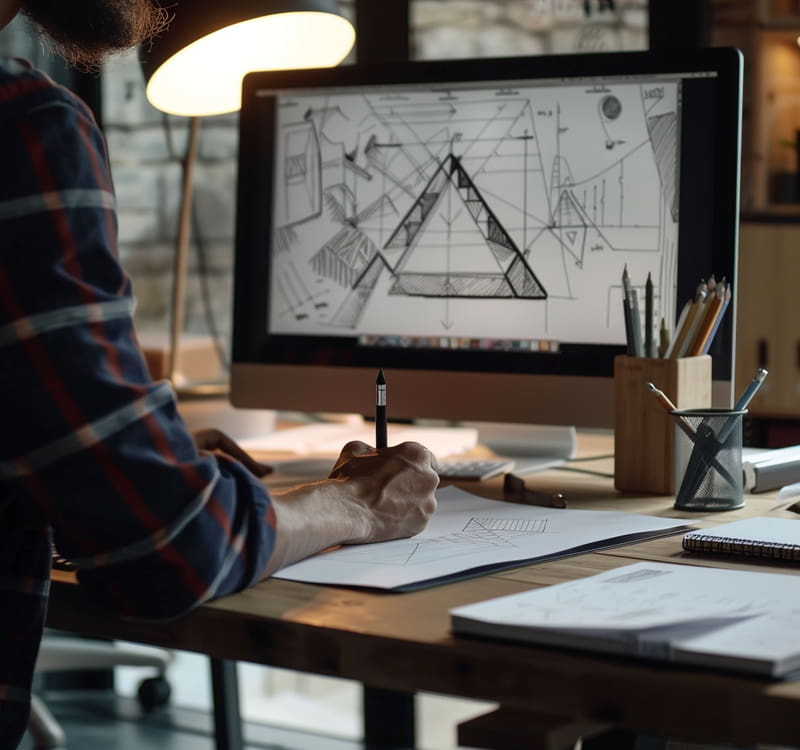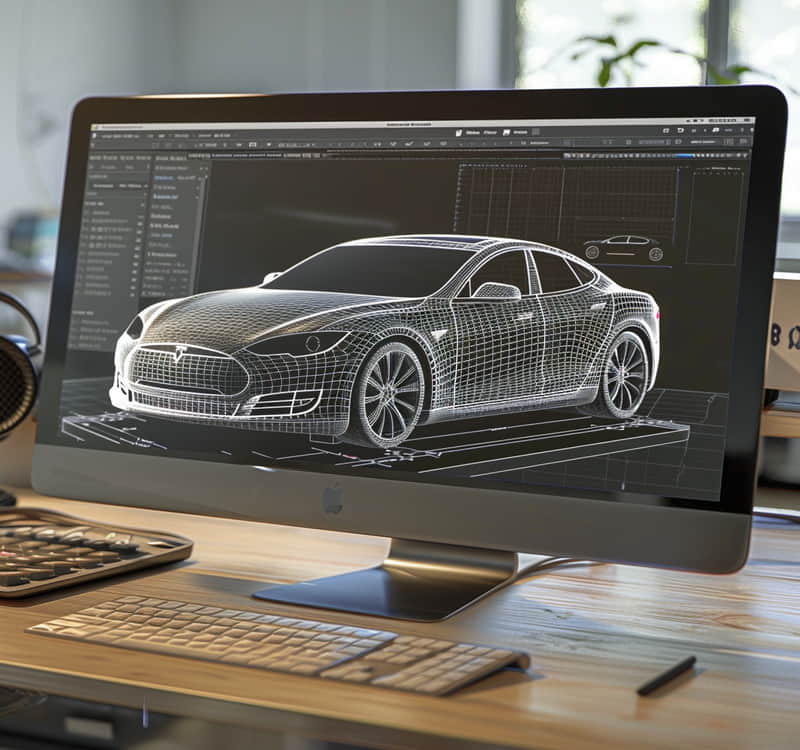CATIA Interview Questions
CATIA Interview Questions!!! Are you looking to advance your career and find your ideal CATIA job? Look no further! Everyone, regardless of CAD/CATIA expertise level, feels nervous at an interview.
To overcome them and land their perfect position with confidence and ease, read this blog as we walk you through the process and answer CATIA interview questions and answers, putting any residual interview worries to rest and securing that desired employment!
Let’s get started now!

CATIA Interview Questions and Answers:
1. What is CATIA and what is the purpose of it?
CATIA is a comprehensive introduction to the software used for designing and implementing objects, products, or items in various domains.
They designed for beginners who want to become professionals in this area and covers various topics such as the software itself, its user interface, available tools, functions, and benefits.
2. What are the challenges of the CATIA user interface and how are they addressed in it?
The difficulties of the CATIA user interface and provides details on the tools available and their functions.
It also discusses the story sketching toolboxes, which are essential for creating 2D sketches and provide advantages and benefits for users.
3. What are the benefits of using CATIA and in which industries is it commonly used?
CATIA is a 3D modeling or 3D sketching software available worldwide. It is not just a simple tool but one of the most leading products and applications in various industries, including aerospace and automobile.
It allows users to create, implement, model, and solve specific product problems in various ways.
4. What features and options are available in the CATIA graphical user interface (GUI)?
Users need to familiarize themselves with the CATIA software and how to interact with it. The GUI provides various tools for users to use, such as start file, edit new user tools, windows help, and more.
5. What should users do when opening CATIA if they do not require the selection screen for product number one?
Users can close the product file and proceed to the start button for mechanical design part design. After clicking on the part name, they are asked to enter the default name for the file.
6. In what industries is CATIA commonly used and what are the benefits of using it?
CATIA is commonly used in industries such as aerospace and automobile. The benefits of using CATIA include understanding the features and options available in the CATIA graphical user interface to better utilize the software for daily tasks and achieve high-quality performance in high-sensitive industries.
7. What is the CATIA platform and what features does it offer?
The CATIA platform offers a user interface with various options, including start files, insert tools, windows, and help.
The left side of the platform has a specification tree, which allows users to access and edit their created designs.
8. What are the two methods for creating a design and what are the differences between them?
The two methods for creating a design are CNC (Computerised Numerical Control) machining and 3D printing. In CNC machining, the exterior part is carved out, eliminating waste and allowing for the final product.
In 3D printing, material addition is done based on the desired descents. Both methods require the machine or equipment to understand the necessary materials and the desired product.
9. Which toolboxes are essential for designing or sketching in Adobe Photoshop?
The profile toolbox, constraint toolbox, operation toolbox, sketch toolbox, and view toolbox are essential for designing or sketching in Adobe Photoshop.
The view toolbox is used in most activities and tasks, allowing users to access various tools based on their performance.
10. What tools can be accessed by going to the “view” option and selecting the “toolbars” option in CATIA?
Users can access various tools for visualization and sketching in CATIA by going to the “view” option and selecting the “toolbars” option. Fixed tools are present, while unchecked ones are not open or unavailable.

11. What is the importance of having a planar surface for 2D sketching in CATIA?
Having a planar surface is important for 2D sketching in CATIA as it allows users to better navigate and perform their tasks effectively.
Users can access various toolboxes for 2D sketching, including profile constraint operations, sketch tools, visualization, and view toolbox.
12. What are constraint tools in CATIA and what can they be used for?
Constraint tools in CATIA allow users to assign values or lengths to objects created. Double-clicking on specific options allows users to continuously give dimensions.
Corner options and chamfers are also available for 3D production of elements.
13. How can users navigate and manipulate their drawings in CATIA?
Users can pan, rotate, and zoom in using the scroll button and dragging in CATIA. To pan, users can click on the scroll button and drag, while to rotate, users must simultaneously press both the scroll button and right click button.
To return objects to their original position, users can select normal view and click on it.
14. What is the first step to begin sketching in CATIA?
To begin sketching in CATIA, users need to select a plane and choose the desired area for the sketch. After sketching, they can access all two bars in the next user interface.
15. What is the recommended approach for creating a complete sketch in CATIA?
To create a complete sketch in CATIA, start by understanding the figure and choosing an approach that allows you to draw from the leftmost side and bottommost side as an origin. This will make it easier for you to draw from here to the side and from there.
16. What is the difference between the profile tool and the line tool in CATIA?
The profile tool in the profile toolbox allows you to draw continuous lines without going line by line. In contrast, the line tool requires you to draw each line individually.
17. How can you create a successful and efficient sketch in CATIA?
By following the steps for creating a fully constrained object or sketch in CATIA, you can create a successful and efficient sketch. This includes understanding the given dimensions and constraints, creating the outline, and ensuring the sketch remains constant in colour.
18. What advice does the text give for creating a fully constrained model in CATIA?
The text suggests starting from a different approach, such as following a rectangle first, creating a circle, and closing it again. We encourage you practicing in more new sketches and drawings to improve skills and speed.
19. What are the basic tool boxes for 3D sketching in CATIA?
The basic tool boxes for 3D sketching in CATIA include sketch-based features, dresser features, transformation features, rest strength elements, and friends’ elements.
Make sure that learn CATIA basic interview questions for better understanding at the beginning.
20. What are the advantages of sketch-based features in CATIA?
Sketch-based features allow users to directly implement all tools or features in a 2D sketch after creating it.

CATIA Training

21. What are the advantages of rest-of-features in CATIA?
Rest-of-features allow users to polish, modify, or create their own elements to 3D objects or models they already created. These features include edge fillet, chamfer, bevel angle, shell, thickness, and other options.
22. Why is it important to select the right tool boxes for each workbench in CATIA?
Selecting the right tool boxes for each workbench is essential for efficient and effective sketching. Sketch-based features allow users to create 2D sketches and then apply these tools to 3D structures. Rest-of-features allow users to create their own elements for 3D objects or models.

23. What is transformation features in CATIA software and what are their advantages?
Transformation features are tools used to replicate existing patterns or designs in a different space. They allow for the creation of multiple patterns and can be implemented using the tools on transformation features.
24. What is the sketch toolbox used for in CATIA software?
The sketch toolbox allows users to select a plane and move on to the sketch options available in the toolbox. It is necessary to create a 3D sketch, as a 2D sketch is needed initially and a plane as surface is necessary.
25. How can users view their created 3D models in specification 3 in CATIA software?
Users can view their created 3D models by clicking on the plus symbol in specification To create a cylinder, users need to select the 2D sketch and thread it to create the 3D model.
Then, they can go to the sketch base features and use the pad option to specify the height and length of the cylinder. A preview is provided to ensure the desired size is accurate.
26. How can users edit or modify their 3D models in CATIA software?
Users can go to the specification frame, which shows the completed pattern. The pattern element can be selected by clicking on the path on the specification frame. Users can also control the length, height, and other options.
27. What is the reverse direction option used for in CATIA software?
The reverse direction option is used to eliminate the extrusion or pad in the opposite direction and reflect it in the normal direction. If the desired direction is reversed, users can go back and repeat the process.
28. What can users do with specification 3 in CATIA software?
Users can create 3D models from their 2D sketches, modify them, and adjust the dimensions as needed in specification Users can also choose to have the 3D environment reflected in the opposite direction or have the extrusion or pad reversed.
29. How can a 3D model be created in AutoCAD?
The user selects a specific plane to create the head of a screw and then moves on to the sketch option to start sketching in the 3D environment.
The user then drops down a rectangle and draws a polygon. To set dimensions, the function option is set to one side, and the desired dimension is set. And also here you can learn more about AUTOCAD and CATIA interview questions.
30. What is necessary to convert a 2D sketch into a 3D model in AutoCAD?
The sketches must be completely closed before accessing the 3D model. This is because patterns cannot be created or models cannot be converted without a closed environment.
To achieve this, the user selects the desired shape and joins it from one point to another. After closing the sketch, they can access the 3D model by exiting the sketch and selecting the desired shape.
31. What issue did the user encounter when trying to create a 3D model in CATIA?
The user encountered an issue when they tried to create a 3D model with an isolated and unclosed line, which showed an error when attempting to extrude it.
32. What is the importance of having a closed sketch for successful 3D modeling in CATIA?
Having a closed sketch is essential for successful 3D modeling in CATIA as it allows for the creation of complete 3D models without any errors.

33. What tool is used in CATIA to create a 3D model from a specific sketch?
The path tool is used in CATIA to create a 3D model from a specific sketch. Users can select their desired dimensions and mirror the selected elements using the path tool.
34. How can users create the table legs in CATIA?
Users can create the table legs by selecting the sketch and using the pad option to drag the sketch down towards the bottom or outward part. To create the opposite direction, users can click on an arrow to either explode or pad the other part.
35. How can users create a table using CATIA?
Users can create a table by using the same sketch for both the table top and the four legs at once. They can create two extrusions or true paddings for the table top and the four legs in one go, allowing for the replication of changes from one circle into other cells.
36. What industries does it cater to?
CATIA is a computer-aided three-dimensional interactive application (CADT) used in various industries such as aerospace, automobile, and electronics.
The basics of CADT, its graphical user interface, tools, options, and navigation. By implementing the software early and practicing, one can become an expert in the category.
37. What is the difference between creating a fillet using the H fillet option and the chamfer option?
The H fillet option allows for different heights and sides of the circles, while the chamfer option allows for different lengths and angles.
38. How can the tangent fillet option be used in CADT?
The tangent fillet option allows for creating circular portions in the fillet.
39. What commands does CATIA offer to create rectangles, patterns, and slots?
CATIA offers various commands to create rectangles, patterns, and slots. These include creating a path and section using a vertical plane and a profile, merging ribbons, creating a rectangle on the bottom side and padding it with a rib, and creating a profile and a slot.

CATIA Training

Let’s get more interactive with the CATIA

What are the toolboxes are essential for creating?
A) 3D models
B) 2D sketches
C) 3D animations
In which industries is Catia widely used?
A) Architecture and construction
B) Aerospace and automobile
C) Fashion and textiles
What does the GUI of Catia provide users with?
A) A selection screen for product number one
B) Tools for creating 2D sketches
C) Windows help and various other tools
When starting Catia, what should a user do instead of opening product file number one?
A) Close the product file and proceed to the start button for mechanical design part design
B) Open the product file and edit new user tools
C) Use the start file option
What are the two methods to creating a design?
A) 3D printing and CNC machining
B) CNC machining and injection moulding
C) 3D printing and injection moulding
What must the machine or equipment understand in both 3D printing and CNC machining for the desired outcome?
A) The necessary materials and the desired product
B) The necessary materials but not the desired product
C) The necessary descents but not the desired product
Which toolboxes are essential for 2D sketching in CATIA?
A) The profile toolbox, constraint toolbox, operation toolbox, sketch toolbox, view toolbox, and visualization toolbox
B) The constraint toolbox, operation toolbox, sketch toolbox, view toolbox, and visualization toolbox
C) The profile toolbox, operation toolbox, sketch toolbox, and visualization toolbox
In which software is the process of creating a 2D sketch described in the text?
A) Adobe Illustrator
B) Adobe Photoshop
C) Catia
What is the importance of having a planar surface in 2D sketching in CATIA?
A) It allows users to create continuous lines and rectangles
B) It enables the use of various toolboxes for sketching
C) It ensures that objects are created in 3D
What is the importance of having a planar surface emphasized?
A) It is necessary for creating 3D models
B) It is essential for 2D sketching
C) It is important for rendering visualizations

Finally, CATIA (Computer-Aided Three-Dimensional Interactive Application), a prominent product design and engineering software package.
It allows users to design, develop, and optimize complex products and systems for a variety of industries, including aerospace, automotive, and consumer goods.
CATIA’s sophisticated 3D modeling, simulation, and collaboration capabilities enable organizations to speed their product development processes, lower costs, and increase overall product quality.
CATIA can help firms innovate, compete, and win in today’s global economy.

CATIA Course Price


Saniya
Author